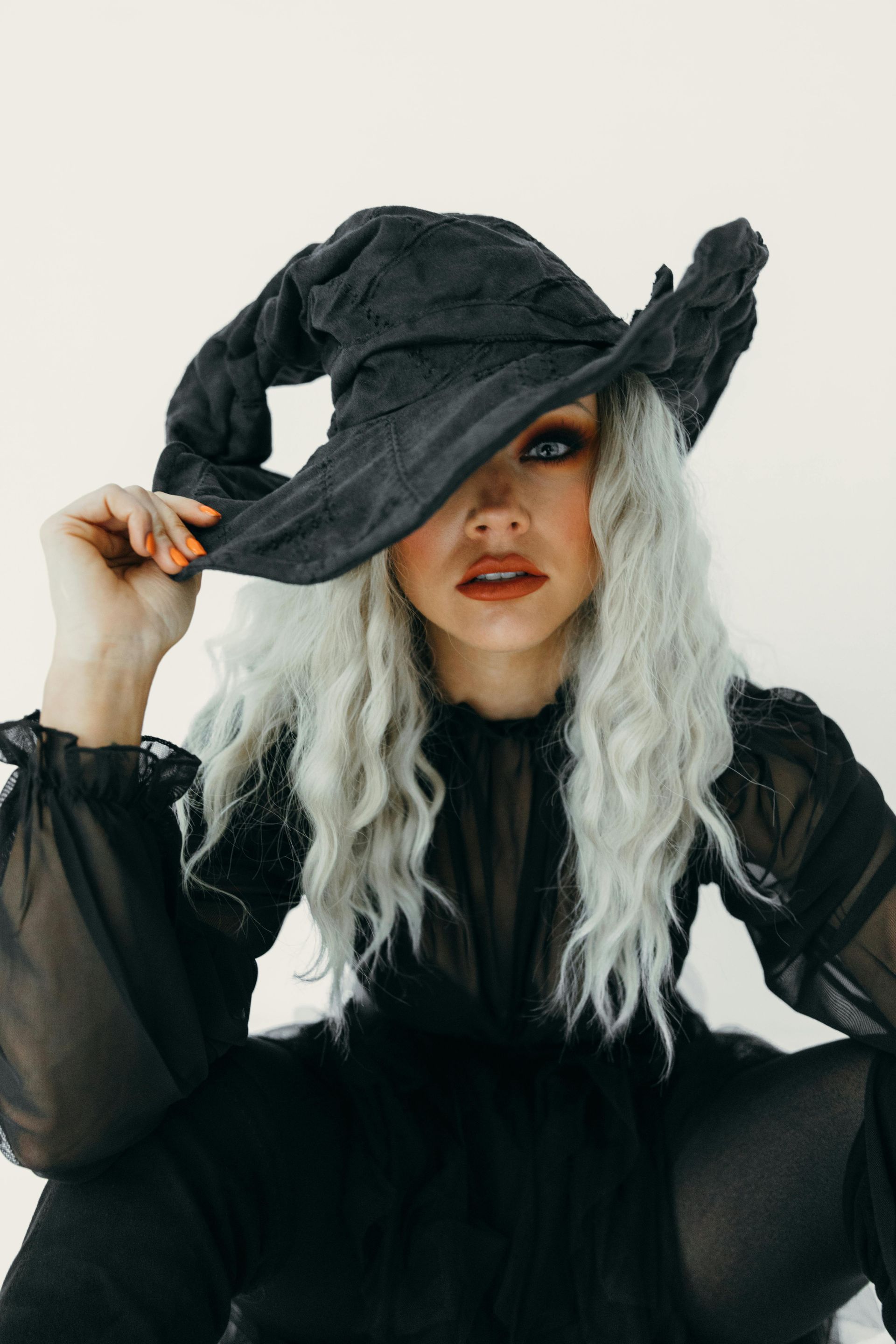(3 min) Managing Halloween as a Neurodivergent Human: ADHD vs. Autism

Halloween is marketed as “the most fun night of the year,” but if you’re neurodivergent, it can feel less like a magical candy-fest and more like an obstacle course of sensory overload, social pressure, and pumpkin-spice chaos.
Neurotypical folks see costumes, candy, and haunted houses. Many ADHD and autistic brains see fluorescent lights, scratchy fabrics, sugar crashes, and unpredictable humans ringing doorbells for hours. Fun? Sometimes. Exhausting? Absolutely.
So how do you survive Halloween (or even enjoy it) when your brain is wired differently? Let’s break it down: ADHD vs. autism edition.
1. Costumes: Excitement vs. Sensory Minefield
ADHD Perspective
Costumes are a dream and a nightmare rolled into one. On one hand, dressing up taps into creativity, role-play, and dopamine. ADHD brains love novelty, so the idea of becoming a pirate, vampire, or glittery pumpkin feels thrilling. On the other hand, ADHD brains also forget that polyester itches, wigs slide, and those fake vampire teeth are a choking hazard waiting to happen.
ADHD Tips for Costumes:
- Pick comfort over aesthetic. If you can’t focus because the fabric feels like sandpaper, the night will be ruined anyway.
- Build costumes around clothes you already love. Black leggings + oversized hoodie + cat ears = cozy witch. Done.
- Have a backup. ADHD spontaneity means you might bail on one outfit at the last second. Having an alternate reduces decision fatigue.
Autism Perspective
For autistic folks, costumes can be pure torture if they involve unfamiliar textures, tight masks, or too many sensory layers. Even face paint can be overwhelming... the stickiness, the smell, the sensation of something drying on skin.
Autism Tips for Costumes:
- Test drive the outfit days in advance. That way you know which seams rub the wrong way.
- Choose character-inspired outfits instead of literal costumes. A green hoodie + turtle backpack = Ninja Turtle, minus the itchy foam shell.
- Don’t force it. If you’d rather not dress up, that’s valid. A simple Halloween pin or themed T-shirt says “festive” without meltdown risk.
2. Trick-or-Treating: Adventure vs. Overload
ADHD Perspective
Trick-or-treating feels like dopamine heaven: running from house to house, surprises at every door, candy as a prize. But it also comes with overstimulation: competing costumes, flashing lights, and constant sugar. ADHD brains can spiral into hyper mode, making it hard to regulate emotions or stop when you’re done.
ADHD Tips for Trick-or-Treating:
- Eat before you go. Otherwise, you’ll crash and burn halfway through.
- Carry a water bottle. Yes, it sounds like “mom advice,” but hydration helps regulate sugar spikes.
- Make a candy plan. ADHD impulsivity + unlimited sugar = disaster. Decide beforehand how much you’ll eat tonight and save the rest.
Autism Perspective
Trick-or-treating means crowds, strangers, sudden noises, and unexpected interactions. For autistic folks, this can be a minefield of sensory and social overwhelm. Not every autistic person enjoys the ritual of “ring bell, say trick-or-treat, smile at stranger, accept candy.”
Autism Tips for Trick-or-Treating:
- Role-play the routine in advance so the script feels familiar.
- Go early, before the crowds and flashing lights ramp up.
- Consider alternatives: trunk-or-treat events, smaller community parties, or even candy swaps at home.
3. Parties: Social Battery Drain
ADHD Perspective
Halloween parties can be exhilarating or draining depending on the vibe. ADHD brains thrive on novelty, so a costume contest or themed games might feel energizing. But small talk in crowded rooms? Cue boredom, distraction, and the urge to ghost early.
ADHD Party Hacks:
- Plan an escape route. It’s okay to leave when you’re done.
- Bring a fidget toy or small grounding object; it can help channel restless energy.
- Focus on one person at a time. ADHD brains can drown in “too many conversations” if you try to mingle with everyone.
Autism Perspective
Parties can feel like a sensory apocalypse: loud music, chaotic lighting, unpredictable social cues, and costumes that make it harder to read faces. Even a small gathering can deplete energy fast.
Autism Party Hacks:
- Scope out quiet zones before you commit. Bathrooms, balconies, even parked cars can be sanctuaries.
- Use noise-canceling headphones. No one cares if your costume is “gamer chic.”
- Skip it entirely if it feels like too much. Celebrating Halloween at home with your own rules is 100% legitimate.
4. Food and Candy Chaos
ADHD Perspective
ADHD brains + sugar = chaos. It can trigger hyperactivity, late-night insomnia, or morning crashes. Yet candy is also dopamine in a wrapper. The trick isn’t to avoid it, but to manage it.
ADHD Candy Strategy:
- Use candy as motivation. Save it for after finishing a small task.
- Mix candy with protein snacks to balance the sugar high.
- Hide it from yourself (yes, literally). Out of sight = out of mind, at least until the next craving.
Autism Perspective
For autistic folks with food sensitivities or dietary restrictions, Halloween candy can be a minefield. Texture issues, allergies, or digestive struggles mean not every candy is safe.
Autism Candy Strategy:
- Do a candy trade. Swap the ones that don’t work for safe favourites.
- Bring your own treat bag stocked with preferred snacks.
- Educate friends and family... it’s okay to say “no” to certain treats.
5. Alternatives to Traditional Halloween
Not every neurodivergent person wants the full Halloween spectacle, and that’s valid. Here are alternatives that work for both ADHD and autistic brains:
- Movie Marathon: Cozy up with Halloween classics (kid-friendly or horror, your choice).
- Pumpkin Decorating: Skip carving and paint, sticker, or bedazzle instead.
- Game Night: Costume optional, candy required.
- Glow-in-the-dark crafts: Fun for dopamine seekers, low-pressure for sensory avoiders.
Halloween doesn’t have to be “all or nothing.” Whether you’re ADHD, autistic, both, or just neurodivergent-curious, the key is tailoring the experience to your needs. You don’t owe anyone the “perfect Halloween” if it drains you.
Remember:
- If costumes make you itchy, ditch them.
- If parties feel like chaos, say no.
- If candy is your love language, eat it guilt-free but with strategy.
At the end of the day, Halloween is just a day. It’s supposed to be fun, not a test of how well you can mask, conform, or keep up with the Joneses and their Pinterest-perfect pumpkin displays. Your Halloween can look however you want... spooky, cozy, sugar-fueled, or not celebrated at all. Because the scariest thing of all? Ignoring your own needs for the sake of tradition! Happy Halloween!!


